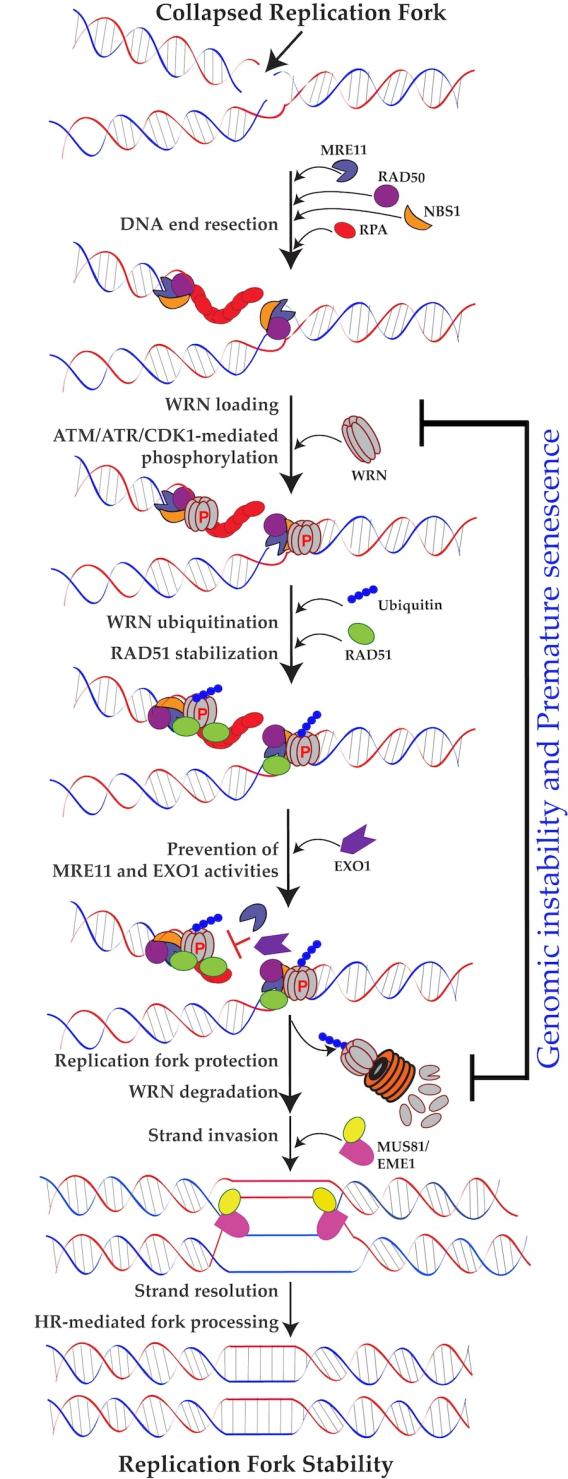Our lab is interested in understanding the molecular role of the Werner syndrome protein (WRN) in the suppression of premature aging syndrome, or Werner syndrome (WS). WS is a rare hereditary disease characterized by premature aging and a predisposition to a broad spectrum of rare cancers.
The Werner syndrome protein, which is defective in WS, plays multiple roles in genome stability maintenance pathways; however, WRN mechanisms involved in preventing carcinogenesis at the nucleotide level are poorly understood.
Our lab is interested in deciphering the molecular choreography of WRN and its biochemical activities, post-translational modifications, and interaction partners in the fidelity of replication fork processing. Our ultimate goal is not only to understand the molecular origin of cancer in WS but also to advance our understanding of the pathophysiology of WS.
References
Su et al. "Replication stress induced site-specific phosphorylation targets WRN to the ubiquitin-proteasome pathway." Oncotarget, 2016; 7(1):46-65.
Su et al. "Non-enzymatic role for WRN in preserving nascent DNA strands after replication stress." Cell Rep. 2014; 9(4):1387-401.
Perry et al. "Identification of a coiled coil in Werner syndrome protein that facilitates multimerization and promotes exonuclease processivity." J Biol Chem. 2010; 13;285(33):25699-707.
Kobayashi et al. "WRN participates in translesion synthesis pathway through interaction with NBS1." Mech Aging Dev. 2010; 131(6):436-44.
Perry et al. WRN exonuclease structure and molecular mechanism imply an editing role in DNA end processing. Nat Struct Mol Biol. 2006; 3(5):414-22.
 Werner Syndrome Protein and DNA Replication
Werner Syndrome Protein and DNA Replication Mukherjee et al. Werner Syndrome Protein and DNA Replication. Int J Mol Sci. 2018. DOI: 10.3390/ijms19113442